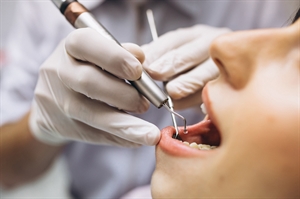All Categories
Featured
Table of Contents
In 4401, Joaquin Clark and Rhett Velez Learned About Frederick This Weekend
Why Is Dental Care Important? Dental care is very important to everyone. It is a way that you can maintain a healthy oral health and to keep your teeth from becoming decayed or infected. Here are some reasons why it is important to get regular dental checkups. When you are younger, your teeth can be very delicate so proper oral hygiene is essential. This means that you should brush and floss every day. It is also a good idea to visit your dentist at least once a year for checkups and cleanings. Your dentist will be able to take a look at your teeth and tell you what they think needs to be done. It is important to remember that some dental procedures may be necessary to treat a cavity or disease. The procedure is known as an orthodontic procedure and a crown is typically placed on the tooth to support the tooth. Crowns may also be used to protect a tooth from infection. Dental hygiene involves regular brushing and flossing. It also includes regular cleaning of the dental cavities. Your dentist will recommend a specific brushing routine for the various types of tooth enamel. Brushing removes plaque and tartar from the teeth and gums while flossing removes food particles and plaque. One of the most common types of problem is tooth decay. If your teeth become infected with tartar, then they will begin to rot. This is also a sign that it is time for your dentist to come out and perform a cleaning. Your dentist can remove the plaque and tartar so that your teeth and gums will stay healthy and clean. In general, dental diseases affect people of all ages. Teeth may wear out faster during the first few years of life, as a result of tooth decay. However, teeth may also wear out more quickly due to the effects of gravity, resulting in cavities and gum disease. Dental problems may be more likely to occur if you smoke, drink coffee or tea, or have diabetes or heart disease. Dental care is not expensive. If you have problems, you should consult with a local dentist to determine what steps will need to be taken to correct the problem. When you visit the dentist, he or she will evaluate the problem and tell you what you can expect from a visit to the dental clinic. When it comes to oral health, everyone wants to keep their teeth as white as possible. You never know what can go into your mouth and what can happen to your teeth. Many dental clinics also offer mouthwash and other types of dental products. Mouthwash is commonly used for those who have sore gums or cracked or chipped teeth. One of the most common dental problems is periodontitis. This disease is a result of plaque buildup on the teeth. Over time, plaque accumulates and forms into tartar. This can become a serious problem because it can eat away at the gums and cause the gums to recede. This condition can also lead to tooth loss. Periodontal disease can also be a result of tooth decay. This type of disease causes periodontal pockets, which are pockets in the gums and teeth where bacteria and other things can form. If the bacteria and other organisms are not removed, the pockets can fill up and cause the gums to weaken. Mouthwash is also used to promote healthy breath. Brushing after eating, drinking and smoking helps to remove unwanted bacteria from the mouth. A humidifier or vaporizer can help in this process.
City in Maryland, United StatesFrederick, MarylandCity of FrederickBridge on Carroll CreekMotto( s): "The City of Clustered Spires" Location within the State of MarylandShow map of MarylandFrederick (the United States) Show map of the United StatesCoordinates: Collaborates: United States Founded1745Government MayorMichael O'Connor (D-MD) Board of AldermenKelly Russell (D-MD) Ben MacShane (D-MD) Derek Shackleford (D-MD) Donna Kuzemchak (D-MD) Roger Wilson (D-MD) Location City24.
28 km2) Land23. 95 sq mi (62. 02 km2) Water0. 10 sq mi (0. 26 km2) Elevation302 feet (92 m) Population City65,239 Quote 72,244 Density3,016. 95/sq mi (1,164. 84/km2) Urban141,576 (United States: 230th)UTC5 (EST) Summer Season (DST)UTC4 (EDT) 21701-21709301, 24024-30325GNIS feature ID0584497I-70, I-270, United States 15, US 40, US 340, MD 80, MD 144, MD 355Website Frederick is a city in, and the county seat, of Frederick County, Maryland.
Frederick has actually long been a crucial crossroads, located at the crossway of a major northsouth Indian path and eastwest routes to the Chesapeake Bay, both at Baltimore and what ended up being Washington, D.C. and throughout the Appalachian mountains to the Ohio River watershed. It belongs of the Washington-Arlington-Alexandria, DC-VA-MD-WV Metropolitan Statistical Area, which becomes part of a higher Washington-Baltimore-Arlington, DC-MD-VA-WV-PA Combined Statistical Location.
Frederick is home to Frederick Municipal Airport (IATA: FDK), which accommodates general air travel, and to the county's largest company U.S. Army's Fort Detrick bioscience/communications research installation. Located where Catoctin Mountain (the easternmost ridge of the Blue Ridge mountains) fulfills the rolling hills of the Piedmont area, the Frederick area became a crossroads even before European explorers and traders showed up.
This became known as the Monocacy Path and even the Great Indian Warpath, with some tourists continuing southward through the "Terrific Appalachian Valley" (Shenandoah Valley, etc.) to the western Piedmont in North Carolina, or traveling down other watersheds in Virginia toward the Chesapeake Bay, such as those of the Rappahannock, James and York Rivers.

Founded before 1730, when the Indian trail became a wagon roadway, Monocacy was deserted before the American Revolutionary War, perhaps due to the river's regular flooding or hostilities predating the French and Indian War, or just Frederick's much better location with easier access to the Potomac River near its confluence with the Monocacy.
Three years earlier, All Saints Church had actually been founded on a hilltop near a warehouse/trading post. Sources disagree as to which Frederick the town was named for, however the likeliest candidates are Frederick Calvert, sixth Baron Baltimore (one of the owners of Maryland), Frederick Louis, Prince of Wales, and Frederick "The Great" of Prussia.
Frederick Town (now Frederick) was made the county seat of Frederick County. The county originally encompassed the Appalachian mountains (areas more west being challenged in between the nests of Virginia and Pennsylvania till 1789). The present town's first house was developed by a young German Reformed schoolmaster from the Rhineland Palatinate called Johann Thomas Schley (passed away 1790), who led a celebration of immigrants (including his partner, Maria Von Winz) to the Maryland colony.
In Elizabeth, NJ, Amiyah Strickland and Iliana Sutton Learned About Places To Visit Near Frederick Md
Schley's inhabitants also established a German Reformed Church (today called Evangelical Reformed Church, and part of the UCC). Most likely the oldest house still standing in Frederick today is Schifferstadt, constructed in 1756 by German settler Joseph Brunner and now the Schifferstadt Architectural Museum. Schley's group was among the lots of Pennsylvania Dutch (ethnic Germans) (along with Scots-Irish and French and later Irish) who moved south and westward in the late-18th century.
Another essential path continued along the Potomac River from near Frederick, to Hagerstown, where it divided. One branch crossed the Potomac River near Martinsburg, West Virginia and continued down into the Shenandoah valley. The other continued west to Cumberland, Maryland and eventually crossed the Appalachian Mountains into the watershed of the Ohio River.
Nevertheless, the British after the Proclamation of 1763 restricted that westward migration path till after the American Revolutionary War. Other westward migrants continued south from Frederick to Roanoke along the Great Wagon Roadway, crossing the Appalachians into Kentucky and Tennessee at the Cumberland Space near the Virginia/North Carolina border. Other German settlers in Frederick were Evangelical Lutherans, led by Rev.
They moved their objective church from Monocacy to what became a large complex a few blocks even more down Church Street from the Anglicans and the German Reformed Church. Methodist missionary Robert Strawbridge accepted an invite to preach at Frederick town in 1770, and Francis Asbury got here 2 years later, both assisting to discovered a parish which ended up being Calvary Methodist Church, worshiping in a log structure from 1792 (although superseded by bigger buildings in 1841, 1865, 1910 and 1930).
Jean DuBois was assigned in 1792, which ended up being St. John the Evangelist Church (integrated in 1800). To manage this crossroads during the American Revolution, the British garrisoned a German Hessian regiment in the town; the war (the stone, L-shaped "Hessian Barracks" still stand). All Saints Church, erected 1813, Principal Parish Church until 1855As the county seat for Western Maryland, Frederick not only was a crucial market town, but also the seat of justice.
Crucial attorneys who practiced in Frederick included John Hanson, Francis Scott Key and Roger B. Taney. Church Street with All Saints and Reformed Church spires, FrederickFrederick was likewise understood throughout the nineteenth century for its religious pluralism, with among its main thoroughfares, Church Street, hosting about a half dozen significant churches.


That initial colonial structure was changed in 1814 by a brick classical revival structure. It still stands today, although the primary worship space has become an even bigger brick gothic church joining it at the back and facing Frederick's Town hall (so the parish stays the oldest Episcopal Church in western Maryland).
John the Evangelist, was integrated in 1800, then rebuilt in 1837 (throughout the street) one block north of Church Street on East Second Street, where it still stands in addition to a school and convent established by the Visitation Siblings. The stone Evangelical Lutheran Church of 1752 was also rebuilt and enlarged in 1825, then replaced by the existing twin-spired structure in 1852.
In Muskogee, OK, Efrain Huynh and Evelin Chavez Learned About Frederick Md Things To Do This Weekend
It ended up being an African-American parish in 1864, relabelled Asbury Methodist Episcopal Church in 1870, and developed its present building on All Saints Street in 1921. Together, these churches dominated the town, set against the backdrop of the first ridge of the Appalachians, Catoctin Mountain. The abolitionist poet John Greenleaf Whittier later commemorated this view of Frederick in his poem to Barbara Fritchie: "The clustered spires of Frederick stand/ Green-walled by the hills of Maryland." When U.S.
Louis (ultimately built to Vandalia, then the state capital of Illinois), the "National Pike" went through Frederick along Patrick Street. (This later ended up being U.S. Route 40.) Frederick's Jacob Engelbrecht corresponded with Jefferson in 1824 (receiving a transcribed psalm in return), and kept a journal from 1819-1878 which stays a crucial first-hand account of 19th century life from its perspective on the National Road.
Church Street by a local doctor to avoid the city from extending Record Street south through his land to fulfill West Patrick Street. Frederick likewise ended up being one of the new country's leading mining counties in the early 19th century. It exported gold, copper, limestone, marble, iron and other minerals. As early as the American Revolution, Catoctin Furnace near Thurmont ended up being crucial for iron production.
Frederick had easy access to the Chesapeake and Ohio Canal, which started operations in 1831 and continued carrying freight up until 1924. Also in 1831, the Baltimore and Ohio Railroad (B&O) finished its Frederick Branch line from the Frederick (or Monocacy) Junction off the main Western Line from Baltimore to Harpers Ferryboat, Cumberland, and the Ohio River.
Louis by the 1850s. Confederate troops marching south on North Market Street throughout the Civil War Frederick became Maryland's capital city briefly in 1861, as the legislature moved from Annapolis to vote on the secession concern. President Lincoln arrested several members, and the assembly was not able to convene a quorum to vote on secession.
Servants likewise gotten away from or through Frederick (given that Maryland was still a "slave state" although an unseceded border state) to sign up with the Union forces, work versus the Confederacy and seek flexibility. Throughout the Maryland projects, both Union and Confederate soldiers marched through the city. Frederick also hosted a number of hospitals to nurse the injured from those fights, as is related in the National Museum of Civil War Medication on East Patrick Street.
Union Major General Jesse L. Reno's IX Corps followed Jackson's men through the city a few days in the future the method to the Battle of South Mountain, where Reno passed away. The websites of the battles are due west of the city along the National Roadway, west of Burkittsville. Confederate soldiers under Jackson and Walker unsuccessfully tried to stop the Federal army's westward advance into the Cumberland Valley and towards Sharpsburg.
The 1889 memorial celebrating Major General Reno and the Union soldiers of his IX Corps is on Reno Monolith Roadway west of Middletown, simply below the top of Fox's Space, as is a 1993 memorial to slain Confederate Brig. Gen. Samuel Garland Jr., and the North Carolina soldiers who held the line.
In Elmont, NY, Quinton Lara and Lyric Hines Learned About Frederick This Weekend
George McClellan after the Battle of South Mountain and the Fight of Antietam, provided a brief speech at what was then the B. & O. Railroad depot at the current crossway of East All Saints and South Market Streets. A plaque honors the speech (at what is today the Frederick Neighborhood Action Firm, a Social Services office).
The Army of the Potomac camped around the Prospect Hall residential or commercial property for the several days as skirmishers pursued Lee's Confederate Army of Northern Virginia prior to Gettysburg. A large granite rectangular monument made from one of the boulders at the "Devil's Den" in Gettysburg to the east along the driveway celebrates the midnight change-of-command.
27 million in 2019 dollars) from people for not taking down the city on their way to Washington D.C. Union soldiers under Major General Lew Wallace fought a successful delaying action, in what became the last substantial Confederate advance at the Fight of Monocacy, also called the "Fight that saved Washington." The Monocacy National Battlefield lies simply southeast of the city limits, along the Monocacy River at the B.
Railroad junction where 2 bridges cross the stream - an iron-truss bridge for the railway and a covered wood bridge for the Frederick-Urbana-Georgetown Pike, which was the website of the primary battle of July 1864. Some skirmishing occurred more northeast of town at the stone-arched "Container Bridge" where the National Road crossed the Monocacy; and a weapons bombardment occurred along the National Roadway west of town near Red Guy's Hill and Prospect Hall estate as the Union soldiers pulled back eastward.
While Gettysburg National Battlefield of 1863 lies roughly 35 miles (56 km) to the north-northeast. The reconstructed home of Barbara Fritchie stands on West Patrick Street, just previous Carroll Creek direct park. Fritchie, a substantial figure in Maryland history in her own right, is buried in Frederick's Mount Olivet Cemetery.
Roosevelt when they stopped here in 1941 on a vehicle journey to the presidential retreat, then called "Shangra-La" (now "Camp David") within the Catoctin Mountains near Thurmont. Admiral Winfield Scott Schley (18391911) was born at "Richfields", the mansion house of his daddy. He became an important marine leader of the American fleet on board his flagship and heavy cruiser USS Baltimore together with Admiral William T.
Major Henry Schley's boy, Dr. Fairfax Schley, contributed in setting up the Frederick County Agricultural Society and the Great Frederick Fair. Gilmer Schley functioned as Mayor from 1919 to 1922, and the Schleys remained one of the town's leading households into the late-20th century. Nathaniel Wilson Schley, a popular banker, and his spouse Mary Margaret Schley assisted organize and raise funds for the yearly Great Frederick Fair, among the 2 biggest farming fairs in the State.
Latest Posts
Designing for Delight: Adding Joy to Web Experiences
The Role of Animation in Modern Web Design
The Psychology of Color: Harnessing Hues in Web Design